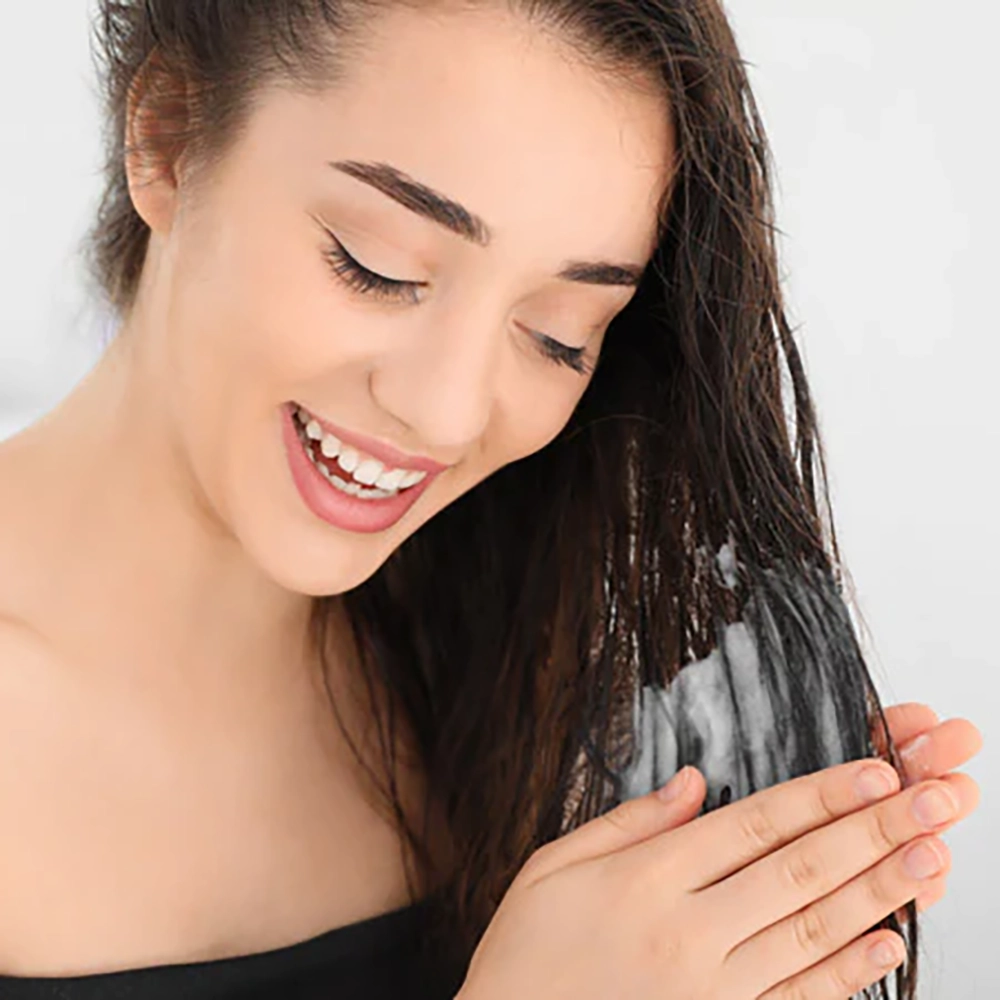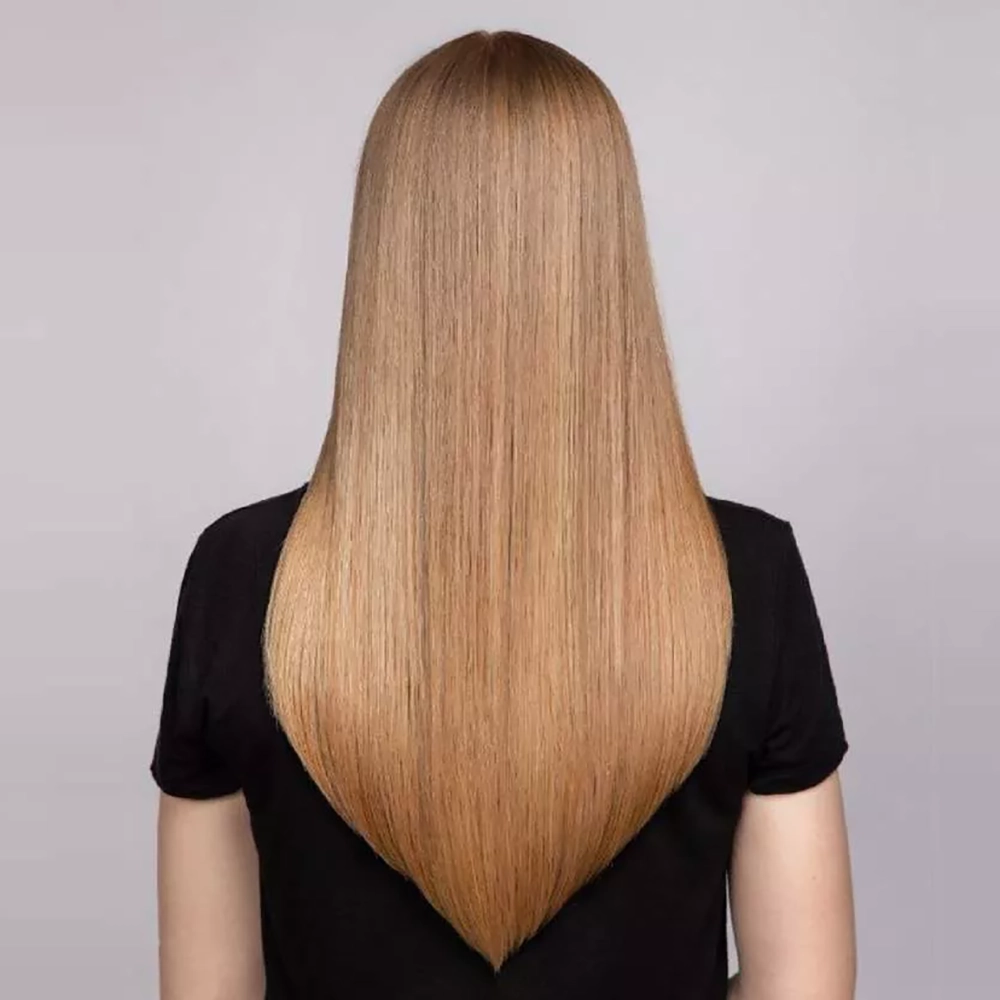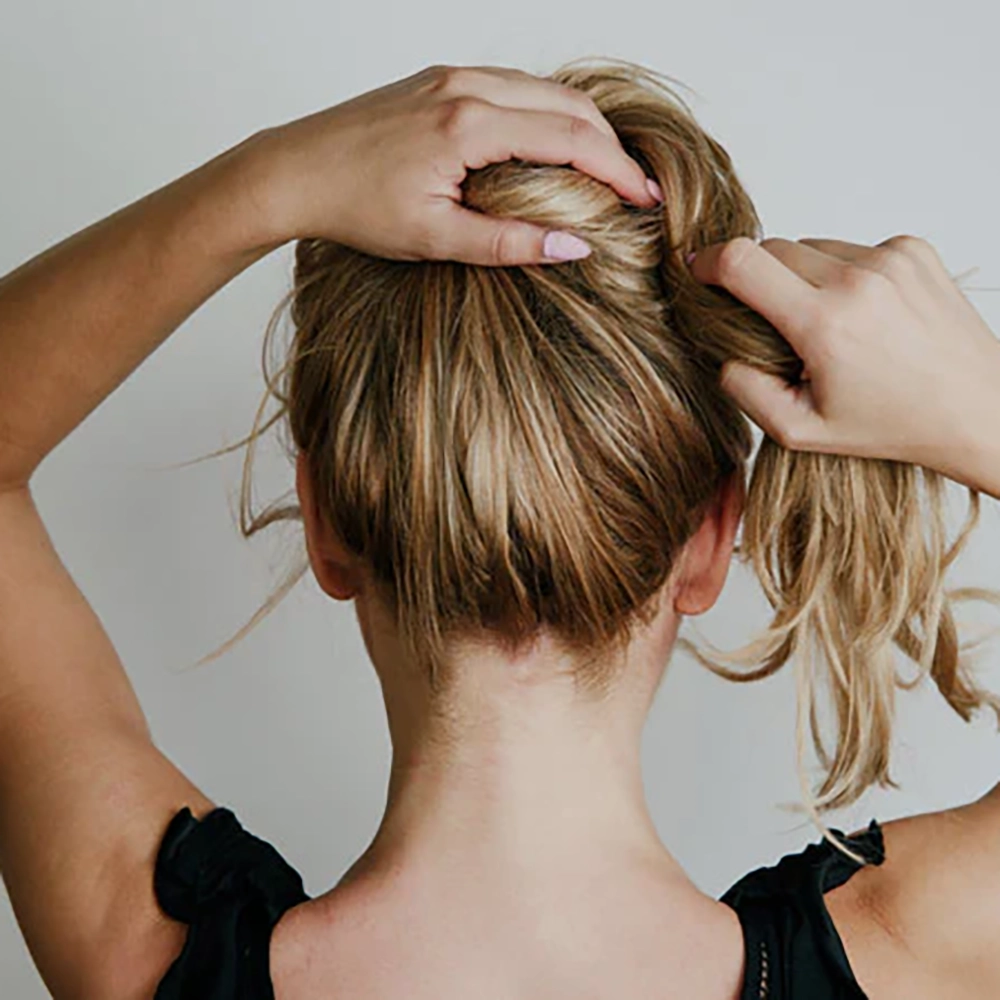Understanding the Causes of Static Hair
Hair can sometimes have a mind of its own, especially when it comes to static. We’ve all experienced those frustrating moments when our hair becomes uncontrollably electrified, sticking up in all directions. But what causes static hair? Understanding the causes of static hair can help us find effective solutions to tame our unruly locks.
One of the main causes of static hair is dryness. When our hair lacks moisture, it becomes more prone to static electricity. Dry environments, such as heated indoor spaces during the winter months, can further exacerbate this issue. To combat dryness, it’s important to incorporate moisturizing techniques into our hair care routine. Using a hydrating shampoo and conditioner can help replenish moisture in the hair, reducing static. Additionally, applying a leave-in conditioner or hair oil can provide an extra boost of hydration to combat static.
Another common cause of static hair is friction. When two objects rub against each other, such as when we brush or style our hair, static electricity can be generated. This friction can be particularly problematic when using certain materials, such as plastic combs or brushes with synthetic bristles. Opting for anti-static hair tools and accessories made from materials like wood or natural bristles can help minimize friction and reduce static. Additionally, using a heat protectant spray before using heated styling tools can further prevent static buildup.
Static hair can also be triggered by external factors such as the weather or clothing materials. During the winter months, the air tends to be drier, which can lead to increased static in our hair. Wearing hats made from synthetic materials or wrapping our hair in scarves or woolen materials can further contribute to static. Choosing materials made from natural fibers like cotton or silk can help reduce static buildup. It’s also helpful to avoid over-styling our hair or using excessive amounts of styling products, as these can contribute to static as well.
- Use a hydrating shampoo and conditioner
- Apply a leave-in conditioner or hair oil
- Opt for anti-static hair tools and accessories
- Choose materials made from natural fibers
- Avoid over-styling and excessive use of styling products
| Causes of Static Hair | Solutions |
|---|---|
| Dryness | Use hydrating hair products and incorporate moisturizing techniques into your hair care routine. |
| Friction | Opt for anti-static hair tools and accessories, and use a heat protectant spray when using heated styling tools. |
| External Factors | Choose clothing materials made from natural fibers and avoid over-styling and excessive use of styling products. |
By understanding the causes of static hair and implementing these solutions, we can say goodbye to those frustrating flyaways and hello to smooth and manageable locks. So, let’s take control of our hair and banish static for good!
Choosing the Right Hair Care Products
Choosing the right hair care products is essential for maintaining healthy and beautiful hair. With so many options available in the market, it can be overwhelming to find the products that work best for your specific hair type and concerns. However, by understanding your hair’s needs and considering certain factors, you can make informed decisions and select the right products that will nourish and protect your hair.
Firstly, it is crucial to determine your hair type before choosing any hair care product. Whether you have dry, oily, or normal hair, there are specific products formulated to address your hair’s unique needs. Identifying your hair type can help you select the right shampoo, conditioner, and styling products that will promote the health and vitality of your hair.
When selecting hair care products, it is important to read the labels and look for key ingredients that will benefit your hair type. For instance, if you have dry hair, look for products containing natural oils like argan oil or jojoba oil, as these ingredients provide deep hydration and nourishment. On the other hand, if you have oily hair, opt for products that are lightweight and oil-free to avoid weighing down your hair.
Another factor to consider when choosing hair care products is any specific hair concerns or issues you may have. If you struggle with frizz, look for products that contain anti-frizz properties or ingredients like keratin. For those with colored or chemically treated hair, choose products that are specifically formulated for color protection to prevent fading and damage.
In addition to understanding your hair type and considering your specific concerns, it is also important to avoid products with harsh chemicals that can strip your hair of its natural oils and cause damage. Opt for products that are sulfate-free, paraben-free, and free of other harmful ingredients. Look for natural and organic options that prioritize the health of your hair.
In summary, choosing the right hair care products requires understanding your hair type, identifying your specific concerns, reading labels for beneficial ingredients, and avoiding harsh chemicals. By taking these factors into consideration, you can ensure that the products you choose will cater to your hair’s needs, resulting in healthier, more manageable, and beautiful hair.
Incorporating Moisturizing Techniques into Your Hair Care Routine
When it comes to taking care of our hair, it’s important to understand that moisture is key. Dry and brittle hair can lead to numerous issues, including static hair. Static hair occurs when there is a buildup of electric charge in the hair, causing it to stand on end and appear frizzy. One of the best ways to combat static hair is by incorporating moisturizing techniques into your hair care routine.
First and foremost, it’s important to choose the right shampoo and conditioner that provide moisture to your hair. Look for products that are specifically formulated for dry or damaged hair. These products usually contain ingredients such as Argan oil, shea butter, or glycerin, which help to lock in moisture and prevent static. Make sure to massage the conditioner into your hair thoroughly, focusing on the ends where dryness is commonly found.
In addition to using moisturizing hair products, there are other techniques you can incorporate into your routine to keep your hair hydrated. One effective technique is deep conditioning. Once a week, apply a deep conditioning treatment to your hair and leave it on for a designated amount of time. This will provide intense moisture to your hair and help combat static. You can also opt for leave-in conditioners or hair oils to provide extra hydration throughout the day.
Incorporating regular hair masks into your routine is another great way to moisturize your hair. Hair masks are highly concentrated treatments that deeply nourish the hair and help repair damage. They can be applied once or twice a week, depending on your hair’s needs. Look for masks that contain ingredients like avocado, coconut oil, or aloe vera, which are known for their hydrating properties. Remember to thoroughly rinse out the mask after the recommended time to avoid any residue that may contribute to static.
- Choose shampoo and conditioner formulated for dry or damaged hair
- Massage conditioner into hair thoroughly, focusing on the ends
- Incorporate deep conditioning treatments for intense moisture
- Use leave-in conditioners or hair oils for extra hydration
- Apply regular hair masks with hydrating ingredients once or twice a week
| Moisturizing Techniques | Benefits |
|---|---|
| Using moisturizing shampoo and conditioner | Locks in moisture and prevents static |
| Deep conditioning treatments | Provides intense moisture to combat static |
| Leave-in conditioners or hair oils | Offers continuous hydration throughout the day |
| Regular hair masks | Nourishes the hair and helps repair damage |
By incorporating these moisturizing techniques into your hair care routine, you can effectively combat static hair and improve the overall health and appearance of your hair. Remember to always read the labels of hair products to ensure they contain hydrating ingredients, and don’t be afraid to experiment and find what works best for your hair type. With consistent moisturizing, you’ll be on your way to static-free, beautiful hair.
Utilizing Anti-Static Hair Tools and Accessories
Static hair can be a frustrating problem, especially during the dry winter months. Luckily, there are several anti-static hair tools and accessories available that can help combat this issue. By incorporating these tools into your hair care routine, you can say goodbye to those pesky flyaways and hello to smooth, sleek locks.
One of the most popular anti-static hair tools is a static-free brush. These brushes are typically made with materials that help prevent static electricity from building up in your hair. Look for brushes with natural bristles or ones made from materials like boar bristle or silicone, as they are known to reduce static. Additionally, using a wide-toothed comb instead of a brush can also help minimize static, especially when detangling wet hair.
Another great tool for combating static hair is a static control spray. These sprays are specifically formulated to neutralize static electricity and provide a smooth finish to your hair. Simply spritz the product onto your hair and comb through to instantly reduce flyaways. Look for sprays that contain ingredients like silk protein or argan oil, as they provide additional moisture and shine to your hair.
In addition to brushes and sprays, there are several accessories that can help prevent static hair. Satin or silk pillowcases are a game-changer when it comes to static. Unlike cotton pillowcases, which can create friction and lead to static, satin or silk materials help reduce friction and keep your hair smooth. Additionally, wearing a satin or silk hair scarf can help protect your hair from rubbing against other materials, which can cause static.
- Static-free brush
- Wide-toothed comb
- Static control spray
- Satin or silk pillowcases
- Satin or silk hair scarf
| Tool/Accessory | Description |
|---|---|
| Static-free brush | A brush made with materials that prevent static electricity buildup. Can be made with natural bristles or materials like boar bristle or silicone. |
| Wide-toothed comb | A comb with wide spaces between the teeth, which helps minimize static, especially when detangling wet hair. |
| Static control spray | A spray specifically formulated to neutralize static electricity and provide a smooth finish to the hair. Look for ingredients like silk protein or argan oil. |
| Satin or silk pillowcases | Pillowcases made from satin or silk materials that reduce friction and keep hair smooth, preventing static. |
| Satin or silk hair scarf | A scarf made from satin or silk materials that protects the hair from rubbing against other materials, which can cause static. |
By utilizing these anti-static hair tools and accessories, you can effectively reduce static and enjoy frizz-free hair. Experiment with different tools and find what works best for your hair type and needs. Say goodbye to static and hello to beautiful, smooth locks!
Exploring Natural Remedies for Static Hair
Static hair can be an annoying and frustrating problem to deal with. Whether it’s caused by dryness, friction, or other factors, static hair can ruin a perfectly styled look. While there are many hair care products and tools available to combat static hair, some people prefer to explore natural remedies first. These remedies are often cost-effective and gentle on the hair, making them a popular choice for those looking for a more holistic approach to hair care.
One natural remedy for static hair is using a homemade hair mask. These masks are typically made with ingredients that are readily available in your kitchen pantry. For example, a mixture of mashed avocado, olive oil, and honey can help moisturize the hair and reduce static. Simply apply the mask to your hair, leave it on for about 20 minutes, and then rinse thoroughly. The natural oils and hydrating properties of these ingredients can help restore moisture to your hair, minimizing static in the process.
In addition to hair masks, incorporating certain oils into your hair care routine can also help combat static. Oils such as argan oil and coconut oil are known for their moisturizing properties. Applying a small amount of oil to your hair after washing and towel-drying can help seal in moisture and reduce static. Be sure to focus on the ends of your hair, as they are often the most prone to static. Additionally, using a wooden comb or brush can help distribute your hair’s natural oils and further reduce static.
| Natural Remedies for Static Hair |
|---|
| Homemade Hair Masks |
| Ingredients: avocado, olive oil, honey |
| Steps: 1. Mash avocado. 2. Mix in olive oil and honey. 3. Apply to hair and leave on for 20 minutes. 4. Rinse thoroughly. |
| Moisturizing Oils |
| Recommended oils: argan oil, coconut oil |
| Steps: 1. After washing and towel-drying, apply a small amount of oil to hair. 2. Focus on the ends. 3. Use a wooden comb or brush to distribute the oil. |
Another natural remedy to consider is using a vinegar rinse. Mix equal parts water and apple cider vinegar and use it as a final rinse after shampooing and conditioning your hair. Vinegar helps restore the pH balance of your hair and scalp, reducing static in the process. It’s important to note that the smell of vinegar will dissipate once your hair is dry, so don’t worry about walking around with a vinegary scent!
Lastly, paying attention to your diet and hydration can also help prevent static hair. Ensure you’re consuming enough water throughout the day to keep your body and hair hydrated. Additionally, incorporating foods rich in essential fatty acids, such as salmon and walnuts, can promote healthy hair and reduce static. Taking care of your hair from the inside out is just as important as using external remedies.
Exploring natural remedies for static hair can be a fun and effective way to combat this common issue. Whether you choose to experiment with homemade hair masks, incorporate moisturizing oils, try a vinegar rinse, or focus on your diet and hydration, these natural remedies can help restore moisture to your hair and reduce static. Give them a try and say goodbye to frizzy, unruly hair!
Avoiding Common Static Hair Triggers
Static hair can be a common and frustrating problem, especially during the colder months when the air is drier. It occurs when there is a buildup of static electricity in the hair, causing it to stand on end and become difficult to manage. While there are various factors that can contribute to static hair, there are also several common triggers that can be avoided to reduce the occurrence of static hair.
1. Synthetic Fabrics: Synthetic fabrics such as nylon and polyester are notorious for causing static hair. When these fabrics rub against the hair, they create friction and generate static electricity. To avoid this, opt for natural fabrics like cotton or silk, which are less likely to cause static.
2. Dry Indoor Air: During the colder months, indoor air tends to be drier due to heating systems and lack of humidity. This dry air can strip moisture from the hair, making it more prone to static. Using a humidifier in your home or workplace can help add moisture to the air and prevent static hair.
3. Overuse of Heat Styling Tools: Excessive use of heat styling tools such as straighteners and curling irons can strip the hair of its natural oils, leaving it dry and prone to static. To avoid this, limit the use of heat styling tools and always use a heat protectant spray before styling.
4. Lack of Hair Moisture: Dry hair is more susceptible to static, so it’s crucial to keep your hair properly moisturized. Use a moisturizing shampoo and conditioner that are specifically designed to hydrate the hair. Additionally, incorporate hair masks or leave-in conditioners into your routine to provide deep hydration.
5. Friction from Brushing: Brushing the hair vigorously or using a brush with harsh bristles can create friction, leading to static. Opt for a wide-toothed comb or a brush with soft bristles to minimize friction. Additionally, gently run a dryer sheet over your hair after brushing to reduce static.
| Trigger | How to Avoid |
|---|---|
| Synthetic Fabrics | Choose natural fabrics like cotton or silk. |
| Dry Indoor Air | Use a humidifier to add moisture to the air. |
| Overuse of Heat Styling Tools | Limited use of heat styling tools and use a heat protectant spray. |
| Lack of Hair Moisture | Use moisturizing shampoo and conditioner, and incorporate hair masks or leave-in conditioners. |
| Friction from Brushing | Use a wide-toothed comb or a brush with soft bristles, and run a dryer sheet over the hair. |
Avoiding common static hair triggers can significantly help reduce static and make your hair more manageable. By choosing natural fabrics, maintaining proper humidity levels, limiting heat styling, keeping your hair moisturized, and using gentle brushing techniques, you can enjoy static-free locks. Remember, small changes in your hair care routine can make a big difference in avoiding static hair.
Tips for Preventing Static Hair in Different Environments
Static hair can be a frustrating problem that many people have to deal with. It occurs when our hair becomes charged with electricity, causing it to stand on end and fly away. While static hair is more common during the winter months when the air is dry, it can happen in any environment. Fortunately, there are several tips and techniques that can help prevent static hair in different environments. By incorporating these tips into your hair care routine, you can say goodbye to those pesky flyaways and enjoy a smooth, sleek hairstyle.
One of the main causes of static hair is dryness, so it’s important to keep your hair moisturized. Start by using a hydrating shampoo and conditioner that are specifically formulated to combat dryness. Look for products that contain ingredients such as arginine and glycerin, which help to lock in moisture. Additionally, consider incorporating a leave-in conditioner or hair oil into your routine. These products provide an extra layer of moisture and can help prevent static.
List of tips for preventing static hair in different environments:
| Avoid over-washing your hair | Washing your hair too frequently can strip it of its natural oils, leading to dryness and static. Try to wash your hair every other day or every few days, depending on your hair type. |
| Avoid using hot tools | Heat can further dry out your hair and contribute to static. Minimize the use of hot tools such as hair dryers, straighteners, and curling irons. When you do use them, be sure to apply a heat protectant spray beforehand. |
| Use a humidifier | During the winter months, the air in your home can become dry, which can exacerbate static. Using a humidifier can add moisture back into the air, helping to prevent static hair. |
| Avoid synthetic fabrics | Synthetic fabrics, such as polyester and nylon, can cause friction against your hair and contribute to static. Opt for natural fabrics like cotton or silk, which are gentler on your hair. |
| Apply a light hairspray | A light mist of hairspray can help to weigh down your hair and reduce static. Look for a hairspray that is specifically designed to combat static, and avoid using too much, as this can make your hair stiff and crunchy. |
By following these tips, you can effectively prevent static hair in various environments. Remember to keep your hair moisturized, avoid over-washing and using hot tools, use a humidifier when needed, choose natural fabrics, and apply a light hairspray. With a little extra care and attention, you can enjoy a static-free hairstyle no matter where you are.


























